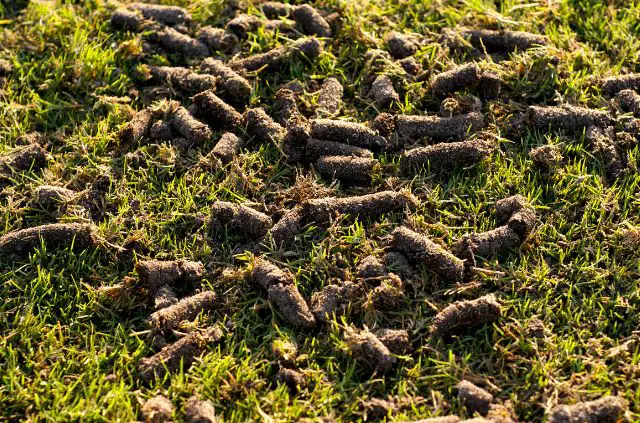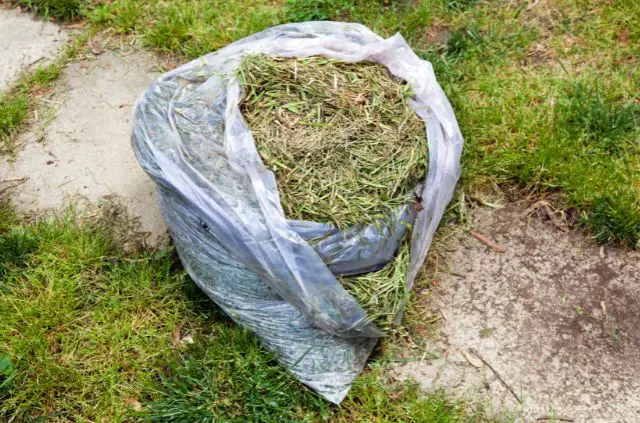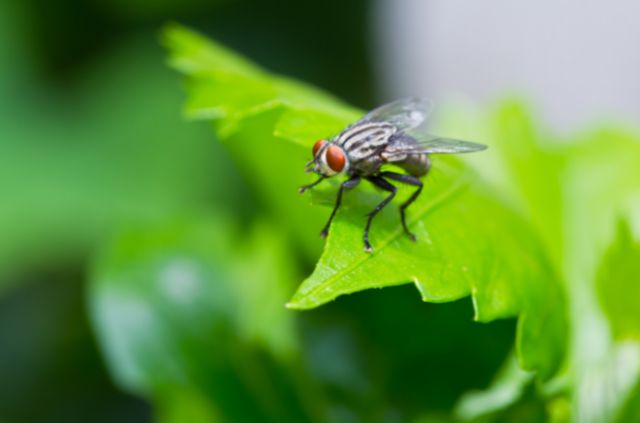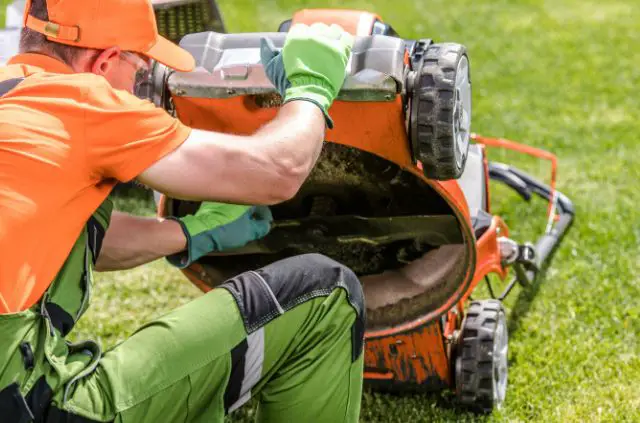Should You Mow Before Aerating?
It’s no secret that lawn aeration is key to maintaining healthy grass. But getting confused is easy if you’re new to the process. This brings us to the following question: should you mow before aerating?
You should mow roughly 1.5-2 inches above the ground before aerating. Using an aerator in tall grass can damage the machine and it won’t be as effective during the plug removal process.
Benefits of Aerating
When done correctly, aerating can provide many benefits to your lawn. Roots below the soil will be strong, and grass will look greener and thicker. Here’s why you should aerate your lawn:
- Creates a rich, vibrant, and better looking lawn
- Allows water into the soil to promote healthy grass and roots
- Makes it easier for fertilizer to enter the soil
- Removal of plugs helps oxygen enter the ground
- Eliminates soil compaction – which helps get rid of dead patches
Aerating is most effective when done with a machine aerator. This heavy-duty tool removes dirt plugs from the soil and leaves them on the lawn. It takes about 2 weeks for the plugs to decompose back into the ground.

Even though it’s possible to aerate your lawn by hand, a machine works much better. Hand tools and spikes are not as good at lifting and removing the soil needed to create a healthy lawn.
Should You Mow Before Aerating?
As we briefly mentioned in the introduction, you should always mow your lawn before aerating. This will not only make the process more effective, but mowing beforehand is also safer on the machine.
If you’re renting an aerator the last thing you want is for it to break. Using the machine in very thick grass will cause more stress on the engine and the plug aeration components.
Aerating before mowing relieves soil compaction and creates space in the ground that allows water, air, and fertilizer to enter the roots.
With that being said, aerating is not the end all solution to your lawn problems. You will need to allow the soil plugs to decompose, apply fertilizer and reseed the lawn in areas where grass is thin.
Setting the Mow Height
Adjusting the mower height is a crucial step before aeration. You will need to set the height anywhere between 1.5-2 inches above the ground. Make sure to avoid cutting too low – as this will scalp your lawn.
This is when the grass is cut very low and the stems are exposed to sunlight. Similarly, aerating in high turf can also cause issues. The plugs won’t make even contact with the surface and there’s a chance you could damage the machine.
Lawn Aeration Process
If your lawn has dead spots, brown areas, or you simply have trouble growing grass, aeration can help. Try following the steps listed below, if you want to aerate your lawn the correct way.

1. Pick a Time
We should first note that you can’t aerate your lawn anytime during the year. Selecting when to aerate is the first step in the process. You will need to aerate during the early spring, or late summer.
This really depends on where you live. It’s better to aerate cool-season grass during the early spring, or early fall. Where warm-season grass should be aerated during the late spring, or early summer.
2. Cut the Grass
You know from this article that you should mow before aerating. Adjust the mowing height between 1.5-2 inches for optimal length – and be careful not to cut too high, or too short.
It’s best to mow about two days before you aerate. This will prepare for the next step, so make sure to check you schedule and block out enough time to complete this lawn maintenance project.
3. Water the Surface
It also helps to water the lawn 1-2 days before aerating. You can even do this after you cut the grass. The main point is that you want to avoid aerating on a completely dry lawn, or a saturated lawn.
That means you should not use an aerator during, or after it has rained. This will create terrible conditions and you there’s a chance you could further damage the grass, from the heavy machine.
4. Mark Problem Areas
This is another crucial step in the aeration process that often gets overlooked. If you heave an irrigation system, make sure to mark the sprinkler heads with flags before running your machine.
This will help you avoid passing over these delicate areas with the aerator. It could damage your irrigation system, aerator, or both. You can also mark stumps, or locations that you need to avoid going over.
5. Aerate
Now you can finally power up that aerator. A core machine aerator will be the better tool and it’s much more effective compared to a spike aerator. This is when cores (or soil plugs) will be removed from the ground.
The best method is to pass over the lawn in one direction, before traveling back over the surface in a perpendicular motion. This will ensure that you are reaching the surface of your lawn at all angles.
6. Fertilize & Seed
Once the aerating has been completed, you can then fertilize the lawn and apply grass seed in thin areas. Grass seed will be able to penetrate deep into the soil, once the core plugs have been removed.
This is the best time to use fertilizer, as the holes in your lawn travel down into the grass roots. You can also throw down some seed in areas where grass doesn’t grow (where there are brown spots, or thin grass).
Conclusion
This article began with a very common lawn maintenance question: should you mow before aerating? Mowing is absolutely an essential step, before beginning the aeration process.
You should never aerate in grass that is too tall, as this won’t be as effective and it can even cause damage to the machine. That’s why it’s crucial to adjust the mower height, before you begin.
Search Terms
- Should you mow before aerating?
- Benefits of aerating







